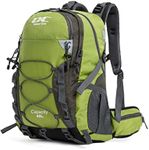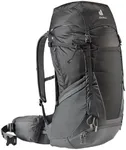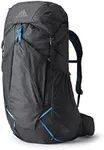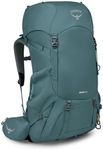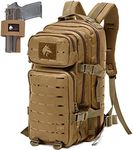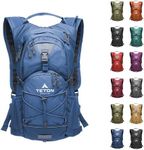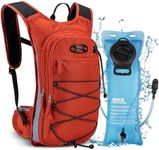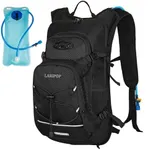Buying Guide for the Best Hiking Backpacking Packs
Choosing the right hiking or backpacking pack is crucial for a comfortable and enjoyable outdoor adventure. The right pack will help you carry your gear efficiently, distribute weight evenly, and provide easy access to your essentials. When selecting a pack, consider the type of hiking or backpacking you plan to do, the duration of your trips, and your personal comfort preferences. Here are some key specifications to consider when choosing a hiking or backpacking pack.CapacityCapacity refers to the volume of the pack, usually measured in liters. This spec is important because it determines how much gear you can carry. For day hikes, a pack with a capacity of 15-30 liters is typically sufficient. For overnight trips, look for packs in the 30-50 liter range. For multi-day trips, you may need a pack with a capacity of 50-70 liters or more. Choose a capacity based on the length of your trips and the amount of gear you need to carry.
Fit and SizeFit and size are crucial for comfort and efficiency. Packs come in different sizes to fit various torso lengths and hip sizes. This spec is important because a well-fitting pack will distribute weight more effectively and reduce strain on your back and shoulders. To find the right fit, measure your torso length and hip circumference, and refer to the manufacturer's sizing chart. Try on the pack with some weight in it to ensure it feels comfortable and secure.
Frame TypeFrame type refers to the structure of the pack, which can be internal, external, or frameless. This spec is important because it affects the pack's stability and weight distribution. Internal frame packs are the most common and offer good support and balance, making them suitable for most hikers. External frame packs provide better ventilation and are ideal for carrying heavy loads on well-maintained trails. Frameless packs are lightweight and flexible, best for ultralight backpacking. Choose a frame type based on the terrain and the weight of your load.
WeightWeight refers to the empty weight of the pack. This spec is important because a lighter pack can reduce overall strain and fatigue. Lightweight packs (under 2 pounds) are great for minimalist hikers and short trips. Mid-weight packs (2-4 pounds) offer a balance of durability and comfort, suitable for most hikers. Heavyweight packs (over 4 pounds) are designed for carrying large loads and are typically more durable. Choose a weight based on your hiking style and the amount of gear you plan to carry.
FeaturesFeatures refer to the additional elements and functionalities of the pack, such as pockets, hydration compatibility, and attachment points. This spec is important because it can enhance convenience and organization. Look for packs with multiple compartments and pockets for easy access to your gear. Hydration compatibility allows you to use a hydration reservoir for easy drinking on the go. Attachment points and loops are useful for carrying trekking poles, ice axes, or other gear. Choose features based on your specific needs and preferences.
Material and DurabilityMaterial and durability refer to the fabric and construction of the pack. This spec is important because it affects the pack's longevity and performance in different conditions. Packs made from high-denier nylon or polyester are typically more durable and resistant to abrasion. Waterproof or water-resistant materials can protect your gear from rain and moisture. Choose materials based on the expected conditions and the level of durability you need for your adventures.

